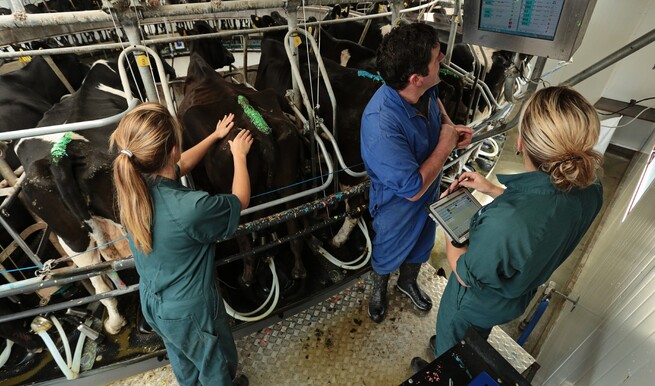They say cash is king, but unfortunately for the last few years the king has left the building. While cost cutting has been an industry-wide focus, advice on the true facts around your different options can be hard to come by. Lately we have become increasingly disturbed at some of the wild advice being thrown around from different quarters of our industry, so here is a brief summary of some facts around the current animal health options used during the lead up to the start of mating.
Pre-mating Blood Testing
This investment is one which will give massive rewards if it identifies any shortage of trace elements or energy balance before it stuffs up mating. A bit like insuring your house.
Pre-mating Drenching
This will give economic benefit if the cows are using energy fighting off worms. There is now a bulk milk sample test which can measure the amount of immune activity against worms in your herd. The tests can then advise on whether it is economic to treat the whole heard or just the skinny and young cows, or whether no cows are worth treating. This test allows you to make an informed decision for your heard.
Non-cycling Cows
"Bulls make cows cycle?" This isn't true. Bulls can pick out cows who are cycling that were missed by people and were incorrectly called non-cyclers, however they won't make non-cyclers start to cycle.-
"CIDRs are the enemy". Non-cycling cows are the problem not CIDRs. CIDRs are one option to help fix non-cyclers. Having all cows cycle before the planned start of mating is the best business target for your farm.
"Once-a-day milking treatment for non-cyclers". Putting cows on once a day for the AI mating period gives them more grazing and resting time so they have more energy available to get their hormonal balance back and return to cycling. New Zealand based trial work has shown in pasture based dairying this will give a loss of milk for the season of approx 20%. Cows should be put on once a day for 3 weeks minimum before the planned start of mating and stay on once a day for at least the first 6 weeks of mating.
"Do CIDR treatments give a positive return on investment?" New Zealand based trial work over the last decade on the use of CIDR based treatments has been carried out by numerous different independent research groups. The results are conclusive: treating a non-cycler early in the first round of the mating period will result in the cow getting pregnant and calving on average 12 to 16 days earlier than if the cow was left to mate naturally. The actual number of non-cyclers not pregnant at the end of the mating season will be about the same whether you use CIDRs or not. The question should be; will you cover the cost of treatment by having the non-cyclers calve 2 weeks earlier?
"Non-cycler genetics being maintained in the herd". AI'ing cows with semen from bulls that have been selected for improved reproductive genetics is the best way to improve the reproduction genetic merit of your next crop of calves, Non-cycling cows are often the higher producing cows and younger cows. Losing the genetics of this group of animals is a negative move for the future of your herd. Working to improve them by ensuring they get in calf early to AI is the best long term move.
At the end of the season, the great spring weather will be remembered as what saved the day for a cash-strapped farming industry. As we finish calving season, some farmers with compact calving spreads reap the reward of a well planned mating season last year, while others still look at a paddock of springers. It is critical we use all the facts this mating and don't cut all costs, ruining the next year's calving spread and reducing milk production and farm profitability.
- Vince Sharp

